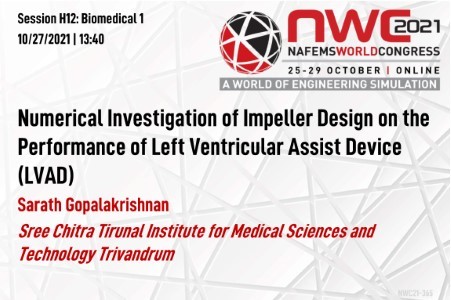
Abstract
Left Ventricular Assist Devices (LVAD) are rotary blood pumps which act as a continues flow circulatory support devices which assists the failing ventricle by pumping blood from left ventricle to the aorta. LVAD helps in restoring the cardiac output and mean arterial pressures to an acceptable clinically relevant levels and unloading the native ventricle. The rotating impeller inside the blood pump is critical component which is responsible for the hydraulic and hemodynamic performance of the LVAD. Rotating impeller also pose a risk of hemolysis and thrombus formation inside the blood pump which affects the performance of the device. The current Computational Fluid Dynamic (CFD) study focuses on the effect of different design features of the impeller and its interaction with pump casing on the performance of LVAD. The influence of radial vanes, offset vanes, splitter vanes and its interaction with pump volute angle and outlet angle on the performance of the pump are studied. The Computational Fluid Dynamics (CFD) studies are carried out using Ansys CFXTM. Flow is modelled as a steady, Newtonian, incompressible flow. The fluid properties like viscosity and density are considered in the study is analogous to that of blood. Moving reference frame approach, a steady state approximation of modelling rotating parts is used to model the rotation of the impeller and the turbulence is solved using Shear stress Transport k -ω (SST k-ω) Turbulence model. The pressure rise across the pump, radial velocities, flow field and wall shear stresses are compared for the different impeller vane configurations, volute and outlet angle configurations. An optimum impeller design is proposed that can meet the clinically relevant flow and pressure which also helps in unloading the native ventricle, by taking part load by the LVAD and thereby causing the recovery of the failing heart.



